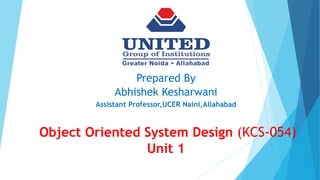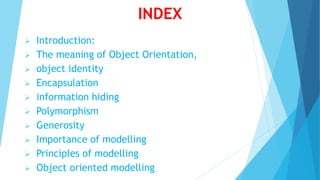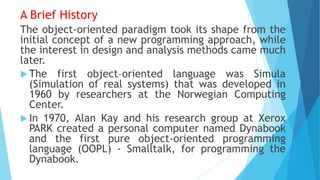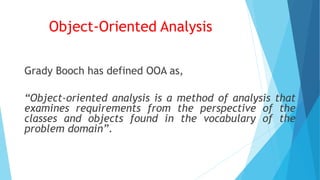This document provides an introduction to object-oriented system design. It defines key object-oriented concepts like objects, classes, encapsulation, inheritance, and polymorphism. It also outlines the processes of object-oriented analysis, design, and programming. Finally, it provides examples of how these concepts are implemented in C++, including how to define classes and create objects.






































